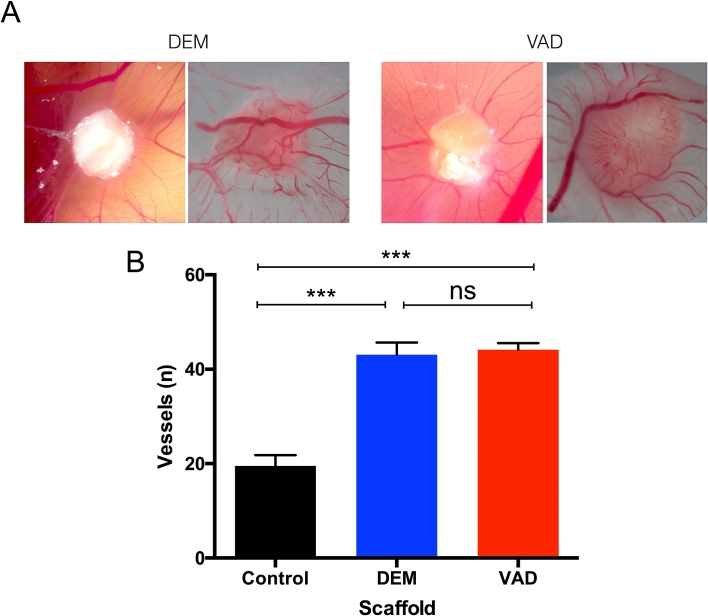Fig. 5.
Acellular human tracheal scaffolds are pro-angiogenic in vivo. (A) To assess the capacity of scaffolds for vascularization, detergent-enzymatic (DEM) or vacuum-assisted decellularized (VAD) human donor tracheal scaffolds were transplanted into a chick chorioallantoic membrane (CAM) assay. Examples of DEM- and VAD-prepared scaffolds 8 days post implantation are shown. (B) Macroscopic quantification of vessels converging on the scaffolds was performed for at least six replicates of each scaffold type. Polyester membrane served as a negative control. Data were analyzed using a Kruskal-Wallis test (ns = non-significant, *** = p < 0.001; for decellularized scaffolds, three donors were analyzed in technical triplicate; for controls, n = 6).

